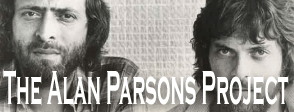- Home
- Special Video Links
- Bands
- The Beatles
- Reo Speedwagon
- Styx
- Michael Learns To Rock
- Air Supply
- Journey
- Fleetwood Mac
- Bee Gees
- The Eagles
- America
- Simon & Garfunkel
- Bread
- Little River Band
- Scorpions
- Crosby, Stills, Nash & Young
- Lobo
- The Alan Parsons Project
- April Wine
- John Denver
- Freddie Aguilar
- Callum Scott
- Musikman
- Boston
- Extreme
- Jabb
- Baking
- I Can Wait For You
- Contact Us
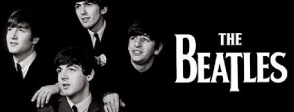
The Beatles were an English rock band that formed in Liverpool, in 1960. With John Lennon, Paul McCartney, George Harrison and Ringo Starr.
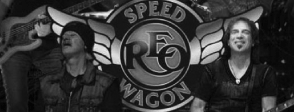
REO Speedwagon is an American rock band. Formed in 1967, the band cultivated a following during the 1970s and achieved significant commercial success throughout the 1980s.
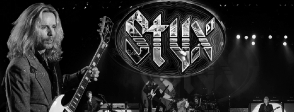
Spawned from a suburban Chicago basement in the early ‘70s, Styx would eventually transform into the virtual arena rock prototype by the late '70s and early '80s.

Michael Learns To Rock was formed in the spring of 1988 by singer and keyboard player JASCHA RICHTER, drummer KÅRE WANSCHER, guitarist MIKKEL LENTZ and bassist SØREN MADSEN.

Air Supply is an Australian soft rock duo, consisting of British-born singer-songwriter and guitarist Graham Russell and lead vocalist Russell Hitchcock.
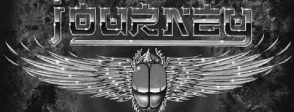
Journey is an American rock band that formed in San Francisco in 1973. The band has gone through several phases; its strongest commercial success occurred between 1978 and 1987.
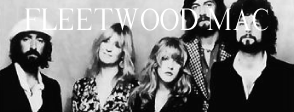
Fleetwood Mac are a British-American rock band formed in 1967 in London. Due to numerous line-up changes, the only original member present in the band is its namesake, drummer Mick Fleetwood.
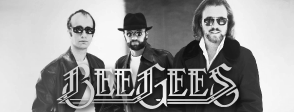
The Bee Gees were a pop music group that was formed in 1958. The group's line-up consisted of brothers Barry, Robin, and Maurice Gibb.

The Eagles are an American rock band formed in Los Angeles in 1971 by Glenn Frey, Don Henley, Bernie Leadon, and Randy Meisner. The Eagles were one of the most successful musical acts of the 1970s.
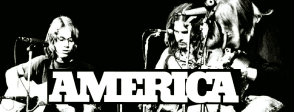
America is an American folk rock band formed in London in 1970 which originally consisted of Gerry Beckley, Dewey Bunnell, and Dan Peek.

Simon & Garfunkel were an American music duo consisting of guitarist, singer-songwriter Paul Simon and singer Art Garfunkel. They formed the group Tom & Jerry in 1957 and had their first success with the minor hit "Hey, Schoolgirl".
Guitar Chords Index
Bands
-
The Beatles
a
- I Saw Her Standing There
- Please Please Me
- Love Me Do
- P.S. I Love You
- Do You To Know A Secret
- All My Loving
- Till There Was You
- Please Mr. Postman
- I Wanna Hold Your Hand
- A Hard Days Night
- I Should Have Known Better
- If I Fell
- I'm Happy Just To Dance With You
- And I Love Her
- Tell Me Why
- Can't Buy Me Love
- Any Time At All
- I'll Cry Instead
- Things We Said Today
- I'll Be Back
- No Reply
- I'm A Loser
- Baby's In Black
- I'll Follow The Sun
- Every Little Thing
- I Don't Want To Spoil The Party
- The Night Before
- You've Got To Hide Your Love Away
- Ticket To Ride
- Act Naturally
- Its Only Love
- You Like Me Too Much
- Yesterday
- Norwegian Wood
- Nowhere Man
- In My Life
- Eleanor Rigby
- Here, There and Everywhere
- For No One
- With A Little Help From My Friends
- She's Leaving Home
- When I'm Sixty Four
- While My Guitar Gently Weeps
- I Will
- A Day In The Life
- Reo Speedwagon a
- Styx a
- Michael Learns To Rock a
- Air Supply a
- Journey a
- Fleetwood Mac a
- Bee Gees a
- The Eagles a
- America a
- Simon & Garfunkel a
- Bread a
- Little River Band a
- Scorpions a
-
Crosby, Stills, Nash & Young
a
- Just A Song Before I Go
- Love The One You're With
- Teach Your Children
- A Man Needs A Maid
- After The Gold Rush
- Comes A Time
- Cowgirl In The Sand
- Four Strong Winds
- Harvest
- Heart Of Gold
- I Believe In You
- Like A Hurricane
- Long May You Run
- Old Man
- Pocahontas
- Southern Man
- Sugar Mountain
- The Needle And The Damage Done
- Lobo a
- The Alan Parsons Project a
- April Wine a
- John Denver a
- Freddie Aguilar a
- Callum Scott a
- Musikman a
- Boston a
- Extreme a
- Jabb a
-
Baking
a
- Croissants
- Empanada Dough
- Hawaiian Bread
- Spanish Bread
- Pandesal
- Siopao Recipe
- Loaf Bread
- Papaya Empanada
- Cassava Cake
- Otap
- Fish Balls
- Hopia
- Puto Recipe
- Donuts
- Twisted Doughnuts (Bicho-Bicho)
- Cheese Bread
- Cream Cheese Loaf Bread
- Apple Turnover
- Puff Pastry Dough Recipe
- Baked Siopao
- Corn Bread
- Pizza Dough
- Pichi-Pichi
- Lumpia Wrapper
- Cream Cheese Dinner Rolls
- Dinner Roll
- Butter Rolls
- Milk Bread
- Cinnamon Roll
- Hamburger Bun
- Tortilla Wrapper
- Ensaymada
- Cheesecake
- I Can Wait For You a
» The Alan Parsons Project
Band History
Behind the revolving line-up and the regular sidemen, the true core of the Project was the duo of Parsons and Woolfson. Woolfson was a songwriter by profession, but also a composer and pianist. Parsons was a successful producer and accomplished engineer. Almost all songs on the band's albums are credited to "Woolfson/Parsons".
Alan Parsons met Eric Woolfson in the canteen of Abbey Road Studios in the summer of 1974. Parsons had already acted as assistant engineer on the Beatles' Abbey Road and Let It Be, had recently engineered Pink Floyd's The Dark Side of the Moon, and had produced several acts for EMI Records.[2] Woolfson, a songwriter and composer, was working as a session pianist; he had also composed material for a concept album idea based on the work of Edgar Allan Poe.
When Parsons asked Woolfson to become his manager, he accepted and subsequently managed Parsons' career as a producer and engineer through a string of successes, including Pilot, Steve Harley, Cockney Rebel, John Miles, Al Stewart, Ambrosia and The Hollies.[2] Parsons commented at the time that he felt frustrated in having to accommodate the views of some of the musicians, which he felt interfered with his production. Woolfson came up with the idea of making an album based on developments in the film industry, where directors such as Alfred Hitchcock and Stanley Kubrick were the focal point of the film's promotion, rather than individual film stars. If the film industry was becoming a director's medium, Woolfson felt the music business might well become a producer's medium.[citation needed]
Recalling his earlier Edgar Allan Poe material, Woolfson saw a way to combine his and Parsons' respective talents. Parsons would produce and engineer songs written by the two, and the Alan Parsons Project was born. Their first album, Tales of Mystery and Imagination, including major contributions by all members of Pilot and Ambrosia, was a success, reaching the Top 40 in the US Billboard 200 chart.[2] The song "The Raven" featured lead vocals by the actor Leonard Whiting, and, according to the 2007 remastered album liner notes, was the first rock song to use a digital vocoder, with Alan Parsons speaking lyrics through it.
Arista Records then signed The Alan Parsons Project for further albums. Through the late 1970s and early 1980s, the group's popularity continued to grow (although they were always more popular in North America and Continental Europe than in their home country, never achieving a UK Top 40 single or Top 20 album). The singles "I Wouldn't Want to Be Like You", "Games People Play", "Damned If I Do", "Time" (Woolfson's first lead vocal), "Eye in the Sky" and "Don't Answer Me" had a notable impact on the Billboard Hot 100. After those successes, however, the group began to fade from view. There were fewer hit singles, and declining album sales. 1987's Gaudi was the Project's last release, though they planned to record an album called Freudiana next.
Although the studio version of Freudiana was produced by Parsons (and featured the regular Project backing musicians, making it an 'unofficial' Project album), it was primarily Woolfson's idea to turn it into a musical. This eventually led to a rift between the two artists. While Parsons pursued his own solo career and took many members of the Project on the road for the first time in a successful worldwide tour, Woolfson went on to produce musical plays influenced by the Project's music. Freudiana, Gaudi and Gambler were three musicals that included some Project songs like "Eye in the Sky", "Time", "Inside Looking Out", and "Limelight". The live music from Gambler was only distributed at the performance site in Mönchengladbach, Germany.
In 1981, Parsons, Woolfson and their record label Arista, were stalled in contract renegotiations when on March 5th, the two submitted an all-instrumental atonal album tentatively titled 'The Sicilian Defence' (the name of an aggressive opening move in chess), arguably to get out of their recording contract. Arista's refusal to release the album had two known effects: the negotiations led to a renewed contract and the album was not released at that time.
In interviews made before his 2009 death, Woolfson said he planned to release one track from the "Sicilian" album, which in 2008 appeared as a bonus track on a CD re-issue of the Eve album. Sometime later, Alan had changed his mind about the album, and announced that it would finally be released on an upcoming Project box set called 'The Complete Albums Collection' in 2014 for the first time as a bonus disc.
Parsons released titles under his name (Try Anything Once, On Air, The Time Machine, and A Valid Path), while Woolfson made concept albums named Freudiana (about Sigmund Freud's work on psychology) and Poe: More Tales of Mystery and Imagination (continuing from the Alan Parsons Project's first album about Edgar Allan Poe's literature).
Tales of Mystery and Imagination was first remixed in 1987 for release on CD, and included narration by Orson Welles which had been recorded in 1975, but arrived too late to be included on the original album. On the 2007 deluxe edition release, it is revealed that parts of this tape were used for the 1976 Griffith Park Planetarium launch of the original album, the 1987 remix, and various radio spots, all of which were included as bonus material.






